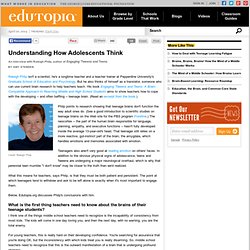

Mr. Moshé's Critically Thinking . . . Are You? - New Teacher Resources. Ways to Make Your Teaching More Effective. Good teaching can't happen without student learning.

Remember that your students are supposed to be the beneficiaries of your communication. Don't make too many assumptions about your students. But you do have to make some. Figure out the Basics Who are my students? Demographics (age, ethnicity, gender mix, etc.).predispositions (hopes, fears, positives/negatives, level of interest).knowledge of/experience with subject/me. In what context will my students engage with course information? Large lecture hall, small seminar room or classroom.lighting and sound issues.time of day. Take into account the "me, here, now. " Picture yourself as a member of the audience and ask "How does this message affect me, here, now? " Establish cognitive / behavioral objectives for student learning: What do I want my students to know?
The First Day, Openings, and Closings Don't waste key "windows" of time on housekeeping alone. The First Day Openings Stay away from the predictable (Good morning. Closings Preparation Delivery. Efficient Ways to Improve Student Writing. 10 Things to Do When You Only Have 5 Minutes Left in Class. Resources >> Browse Articles >> Curriculum & Instruction Featured Author: Worksheet Library Worksheet Library was developed and is maintained by veteran elementary teachers who have over 50 years of classroom experience.

Each worksheet is developed with the goal reducing your planning time to spend more quality time with your students. Servicing K-6 teachers exclusively. You’ve completed your lessons for the day, but you still have some time left and a group of eager students with nothing productive to do. 1. Have your students write a journal entry to summarize the things that they learned in class that particular day. 2. With only 5 minutes left in class, this is the perfect time to have a poll for the students to vote on. 3. Students are always writing notes in class, but usually get in trouble when they get caught. 4. This game is a fun way to review what kids learned in class. Continue reading on the next page. Miss Lifesaver. Stages of Teenage Development: Physical and Psychosocial Aspects. Physical growth pattern during teenage Teenage development is a phase of rapid physical growth that is only second to the rate of growth seen during infancy.

The rapid growth phase of teenage lasts for 4-5 years, when on an average: Girls gain 8.3 cm. per year and boys gain about 9.5 cm. per year. During 7 years of teenage development children gain half of the total expected gain in height required to achieve the adult height. One-third of total height gain is reached in the first 3 years of life. The 10 years between 3 and 13 years of age fall in the slow phase of child growth. Along with the corresponding gain in body weight teenagers are propelled towards adult size and form: Growth spurt of adolescence The development of secondary sex characters is emphasized with the onset of puberty and the associated hormonal surge. Mastergardeners.nmsu.edu/pubs/_f/f-122.pdf. The Teen Brain. BETTY ANN BOWSER: Matt and Adam Bukowski toured the Air and Space Museum in Washington recently with their parents.

Although they are average teenagers, these 14-year-old fraternal twins are on the cutting edge of brain science. MATT BUKOWSKI: I play soccer. I’m just more like flexible than him and… BETTY ANN BOWSER: Who has more girlfriends? (Adam raising hand) Understanding How Adolescents Think. Philp points to research showing that teenage brains don't function the way adult ones do.

(See a good introduction to scientific studies on teenage brains on the Web site for the PBS program Frontline.) The neocortex -- the part of the human brain responsible for language, planning, empathy, and executive functions -- hasn't fully developed inside the average 13-year-old's head. That teenager still relies on a more reactive, gut-instinct part of the brain, the amygdala, which handles emotions and memories associated with emotion. Teenagers also aren't very good at reading emotion on others' faces. In addition to the obvious physical signs of adolescence, teens and 'tweens are undergoing a major neurological overhaul, which is why that perennial teen mumble "I don't know" may be closer to the truth than we'd realized. What this means for teachers, says Philp, is that they must be both patient and persistent.
10 Facts Every Parent Should Know about Their Teen's Brain. By Robin Nixon | April 22, 2011 11:05am ET Credit: nullThey are dramatic, irrational and scream for seemingly no reason.

And they have a deep need for both greater independence and tender loving care. There is a reason this description could be used for either teens or toddlers: After infancy, the brain's most dramatic growth spurt occurs in adolescence.